Communications Theory
Welcome to the second of two Best-Of Weeks (aka "Let's Give the Web Team a Vacation" Weeks). Last week, I chose my favorite design-oriented article of the year. This week is my overall favorite personal article of the year. I narrowed it down to four choices:
"Twenty Things That Were Going To Kill Magic"
"Finding the One" Part 1 amp; Part 2
"Live Like a Gamer"
"Communications Theory"
"Twenty Things That Were Going To Kill Magic" was the article I wrote during the 20th Anniversary week and explored many of the biggest controversies of the game. "Finding the One" was the two-part story I wrote about getting together with my wife. "Live Like a Gamer" was an article where I gave some life lessons about using gaming skills in life. My choice for this week's article was one where I used something I had learned in communications school and explained how I've used it in my designs. I very well might have picked "Finding the One" or "Live Like a Gamer" if both weren't less than a month old.
"Communications Theory" was the result of me taking years to figure out how to apply what I learned in school to my job as head designer and I am very happy with how I've not only been able to apply it but how I managed to explain all of it in an article. If you didn't catch it during the year (or just want to read it again), I wholeheartedly recommend giving it a read.
I often get versions of the following letter:
Dear Mr. Rosewater,
My name is ________________ . I have been playing Magic for many years ever since I was _______ . I am about to go to college and I realize what I really want to do is work in Magic Ramp;D. What should I study in order to increase my chances of making that happened?
A Future Coworker
My reply is always the same. I tell them that there is no one path to becoming a game designer (although "game design" is actually a field of study at some colleges—that wasn't true when I went to school). It's important to learn how to think analytically, how to communicate those ideas, and then be able to have a dialogue about them. It's also important to just play a lot of games to understand what others have already done. None of this, though, ties you down to any one particular field of study.
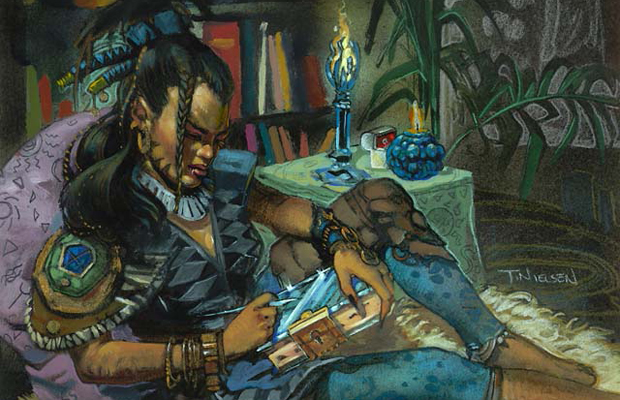
In fact, it is my contention that the best thing you can do is to study something no one else in Ramp;D has studied, because that way you bring a new set of skills to the group. For example, in college I attended Boston University's College of Communication. I got a Bachelor of Science in Communications (yes, a BS in Communications) with a focus on film and television and a major in screenwriting. What does any of that have to do with designing Magic? Well, as I'm going to be spending a whole article talking about, quite a lot, it turns out.
When I showed up in Ramp;D, I was a bit of an oddity. Most of early Ramp;D (what I call the First Wave) was math- or science-based in their education. I had studied not numbers but words. My background was in communications and psychology (my mother is a clinical psychologist and I've always been fascinated with psychology). In my time at Ramp;D, I have spent a lot of time forming vocabulary for Ramp;D to use to discuss ideas and introduced psychology through the player psychographics.
I feel my influence has been a focus not on how the game works but in how the audience perceives it. We're not just making cards, we're making cards for people. If we understand who they are and what they want, we'll be able to do a much better job.
That's the reason I urge the letter writers to find their own passion and learn things that mean something to them. (Ramp;D does require an undergraduate degree, so going to college is also important unto itself.) I want our future coworkers to bring brand new things to Ramp;D.
- Basic Human Nature
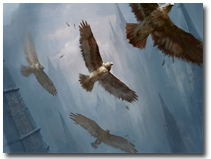
I've spent a lot of time in my column (and my podcast and my blog) talking about the player psychographics. I thought it might be nice today to lean a little more on my communications background and less on my psychology one (although the two are pretty intertwined). Today, I am going to explain something I learned in school known as communications theory. I should note that this is what I was taught it was called, but since my college years (over twenty years ago) a new field has grown up called communication theory (no "s"), which is more math-based and talks about how information is processed. While that is cool, it is not what I'm talking about today. I am talking about how communications (as in mass media) works and not how communication (as in how people convey information back and forth) works.
With that out of the way, let me explain what exactly communications theory is all about. Let's say I want to start some form of media (a website, a magazine, a television channel, etc.). What can I do to ensure I get an audience? Most people's first answer is content. You have to have something that people want to read or see or hear or experience in some form. Content, although very important, is just one piece of the puzzle. Yes, you have to have good content, but without the proper structure your new media will never take off.
Communications theory says that in order to provide this structure, you need three things: comfort, surprise, and completion. My plan for today's column is to define each of those terms and then walk you through what they mean through three different lenses. The first will be this website, as I used communications theory to set it all up. The second will be story structure. I'll show how these basic concepts are used in the very act of storytelling. The third will be Magic design because, well, this is a Magic design column, after all.
Before I begin, though, I want to explain that all of this is based on basic human nature. Communications theory states that humans are going to function a particular way and that it's media's job to adapt to human nature and not make humans adapt to its behavior. This dictum might sound familiar as one of my common sayings is "When you fight human nature you are taking up a losing battle." Each of these three principles is based on a key element of how humans function. Communications theory says that to be successful you have to make your media match the audience's needs.
- Comfort
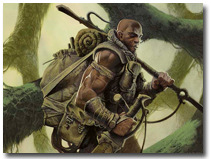
When you dig down deep, all three of these qualities talk about something at the core of how humans function. So when you dig down deep, I mean really deep, into the human psyche, what's the baseline? What's the thing underlying everything else? The answer is survival. Humans have thrived because at our core we are creatures of survival.
What's the best way to survive? Stick to the known. Hungry? Why not eat that from that berry bush that didn't kill you yesterday? This need to be wary of the unknown creates a strong desire within humans for comfort. We are happiest when our world is well defined with things we have experienced. We like what we like and the inertia to continue having the same known things makes us creatures of habit.
Communications theory recognizes this force and says that media need to play into this desire. How? By creating a structure that can easily be understood and adapted. For example, when we first put together magicthegathering.com (now dailymtg.com), I decided I was going to follow communications theory to a T. Have you ever noticed how, on a website or in a magazine, the same sections are always in the same places? Have you ever wondered why that was? The answer is that they want the reader to get familiar with how the media is going to work.
This accomplishes several goals. First, it makes the material easier for the audience to use. The audience has a sense of where it needs to go to get the part it wants. Second, it makes it much easier to create because there is a formula in place. The creators of the content understand what exactly has to be produced each time. Third, and most importantly, it makes the media comfortable for the audience. Once the audience has put in the initial investment to learn how it works, the media's structure becomes something it doesn't have to actively think about.
This was the major reason that, when we put magicthegathering.com together, I made sure to put columns on set days of the week, each with a regular columnist. This would allow the readers to know the routine and be able to anticipate each day's contents. Besides weekly content, I also made sure to include items that showed up daily, like Magic Arcana and Card of the Day. This would encourage players to make the website a daily routine.
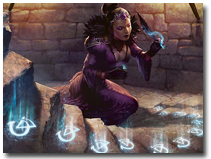
In the 70s, a major newspaper did a giant amount of market research to discover why people read their paper. The number two answer was to "get the news." The number one answer was "because I do it every day." We learned this in school because it drives home a very important point. The habit (or comfort) of media is more important than the content. The audience will prioritize comfort of the presentation over quality of the content. I cannot stress how important this concept is.
What this means is that media have to do everything in their power to make themselves as comforting as possible, because once you get into someone's habit, you will become a part of that person's routine, and then you are using human nature to your advantage rather than fighting it.
Let's now look at this same concept but in a completely different element of media—storytelling. For those who are not familiar with story structure, it is based on something known as three-act structure. Basically, all stories can be broken down in to three components, called acts. In the basic terms, you can think of this as beginning, middle, and end. The first act is all about setting up the story. I'll even go a step further. It's about making the audience comfortable with the characters and the environment.
For example, let's look at a horror story. The beginning of a horror story is about showing the world before the horror happens. We meet the characters usually participating in a very mundane activity—the kind of thing we all do. They're having a meal or going to work or having the small kind of problem (a flat tire, nervous about asking a girl out, losing their keys, etc.) that we all can relate to.
The reason that horror stories start this way is that we need to make the audience comfortable with the setting. We want them invested in caring about the characters because that investment is going to be what makes them emotionally connect to the story. "I don't want something bad happening to the girl I can relate with."
Now, let's try a romantic comedy. Act one is about the main character breaking up. Odds are, it's going to go badly and it won't be the decision of the main character (well, unless the main character catches his or her partner cheating, but then that still really isn't the decision of the main character). The romantic comedy archetype is about relationships, so we have to start the character at a low point to maximize room to grow. More important than that, we want to get the audience to connect with the main character. Everyone's had a relationship end, so it's a pretty universal jumping-on point to get the audience to bond with the character. The breakup is usually set up to make us sympathize with the main character.
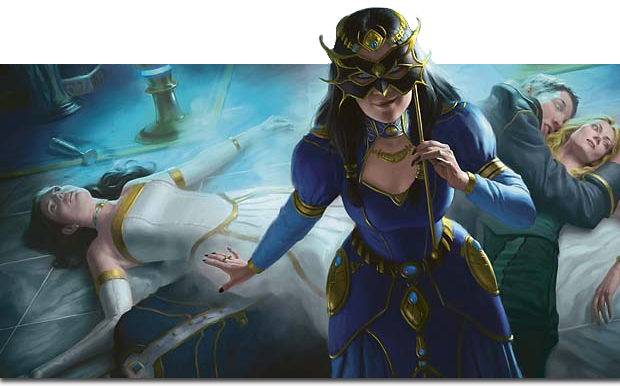
Finally, let's look at the myth of the epic hero. If you're unfamiliar with what this is, think Star Wars, Harry Potter, The Hobbit—it's the most used hero trope in storytelling. Act one has the main character being just a normal person. We see the main character in his or her routine, boring life, but something about the character shows us he or she is unhappy with how life has turned out. The character seeks something more. We, the audience, can look at our own lives and recognize that we too have dreamed of something extraordinary to happen to us.
Now let's shift over to Magic design. I'm making a new block. While a lot of focus goes on how we make it different (and we'll get to that element down below), there is an equal amount of work making sure that the new set still feels like Magic. Yes, we can shift and adapt each year but not so far that Magic doesn't still feel like the same game that everyone fell in love with. A lot of work has to go into making it feel the same, of making it feel comfortable.
We have a lot of tricks to do this. I've talked about our design skeleton, where we make sure that each color gets the effects that it normally has each set (for instance, green has its Giant Growth variant, while blue gets its Counterspell). New World Order has a component that says that we need to focus our changes in any one set such that there is one major new thing with the rest being things players are used to. We have set rules for how big creatures get in different colors in different rarities. Evergreen mechanics show up at a certain rate and also at certain rarities. A lot of work is done to make sure that the players' basic sense of a set, much like their basic sense of a website or magazine, stays intact, to keep a level of comfort.
This ideal also gets applied to new mechanics and cards. We make sure that new things have a certain feel to them. For example, one of the reasons we tend to put mechanics onto base effects is so that even the new mechanics have an element of familiarity to them.
You can see that no matter what I'm talking about, be it a website or a story or an expansion, great pains are taken to make sure that the audience is familiar with the new thing because it plays upon all the experience it's built up with previous versions of the thing. That level of comfort is always maintained.
- Surprise
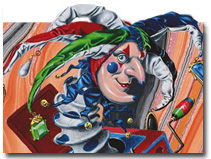
Humans crave security and thus prioritize things that are known and safe. But here's the thing: humans are complex. You see, part of survival isn't just staying safe but also adapting. In order to adapt, you have to be able to learn new things. To make sure that happens, human beings have curiosity. It's something that makes us want to learn about the unknown.
Wait, isn't the unknown scary? Didn't I just say that up above? I did. I also said last paragraph that humans are complex. Humans have this need to explore new things but also this need to stay safe. How do they reconcile the two? By exploring in places that feel safe. This is the next key part of communications theory. Once you've set up this safe place for the audience, you want to occasionally surprise it. Why? Because surprise within the context of comfort is a lot of fun.
For example, let's take the website. Okay, we've set up this rigid structure so the audience knows what to expect, but then we do other stuff. We make sure that we do unexpected stuff that just pops up every once in a while. This makes the audience want to check the site every day because it never knows when the surprise is going to happen. In addition, some of our set structure is made to have a built-in surprise element. For example, sometimes we have extra feature articles but the subject matter and author always changes, so you never quite know what to expect. Comfort helps the audience make the site a habit but surprise makes readers eager when they show up each day.
Now let's jump over to storytelling. The first act makes the audience comfortable by showing characters and/or situations people can relate to. The second act, though, is about things happening the audience doesn't expect (barring whatever the audience learned from the trailer or poster). This is the part in the story where the author gets to surprise the audience.
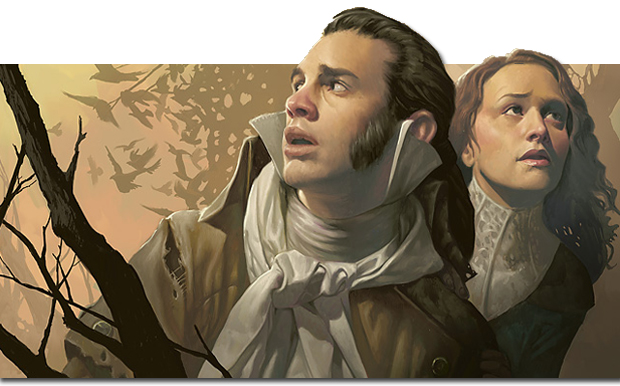
Let's walk through our three story archetypes. In horror, this is when things start to go awry. Slowly at first, to keep the audience guessing, eventually the monster—or whatever the horror is—makes itself known and something about it should be a little unexpected. In the romantic comedy, boy gets to meet girl (or boy meets boy or girl meets girl, depending on your story). Their meeting is unexpected—not that they meet; that was a foregone conclusion. They meet in some way that most likely makes their eventual relationship seem in great doubt. They hate each other or some huge obstacle gets in their way. Why they hate each other or what that obstacle is should be a surprise. In the myth of the epic hero, the protagonist learns that he or she is not who he or she thought. Some outsider visits and explains the hero's true origin and the hero learns he or she has abilities he or she never realized. While this formula is consistent, the details are always a surprise.
Now let's bring it back to Magic. I talked above about how I have to make sure every set feels like a Magic set. I have to make sure all the pieces one expects for the game show up in each expansion. I also have to make sure each set surprises the audience in some way, though. I have to have mechanics and cards the audience hasn't seen. I have to do things that haven't been done before or bring back a popular element of an old set but with a new context. I have to have a different tone and the block plan has to have different goals.
As an example, let's take the design of Innistrad. For the first time, we did top-down design for the horror genre. We did double-faced cards. We finally made Werewolves a real thing and we even gave them a mechanic. We also had three more monsters tribes. We did Human tribal for the first time. We had morbid and curses and transform. We brought back flashback. There was a lot going on that was novel and fresh.
Just as with the website, the comfort is necessary to keep the audience happy, but once it's comfortable, the audience will start wanting some surprise. You want to serve up the game players know and love while also giving them a game that's fresh and new.
- Completion

This last attribute is something I've talked about often when exploring how design has to take human nature into account. Hardwired into the human brain is pattern completion. We as a species are compelled to look for and find patterns. My best guess is that it's an internal trait to help humans learn. Communications theory says that media should be aware of this need to complete patterns when creating structure. You want to set up your media such that the audience's need to find completion compels them to want to read/see/hear/experience what you have offer.
For example, when we set up the website, I worked hard to create a lot of consistent content on a regularly set schedule. This helped people not only focus on what they were interested in but also create patterns to follow. Once you get a player to read a column for a number of weeks, for instance, it becomes a pattern he or she feels a need to continue. ("I've read every one of Mark's columns so far; I'd better read this week's too.")
I also set up theme weeks every other week. Part of this was a tool to help the writers create content but another important aspect was that it set up a pattern for readers to follow. ("I'm interested in this week's theme so I'll read all the columns about it.") This helped promote sampling, which got players to become invested in columns other than what they were currently reading.
In my column, I also made use of multi-part columns, which help readers get used to reading each week. Once you have set up the pattern, human nature will kick in and the reader will be more inclined to come back the following week to finish what he or she started.
Now let's jump to stories. The third act in a story is about wrapping up the story. To do this, you have to understand what the audience is expecting so you can deliver it. In a horror story, for example, the protagonist and the "creature of horror" have to have a final meeting in which one of them dies. In a romantic comedy, the couple has to reunite after whatever it was that drove them apart. In the myth of the epic hero, the protagonist has to come face to face with the antagonist—someone who it turns out is intrinsically tied to the hero—and find the strength to overcome some internal obstacle that will allow him or her to defeat the villain.
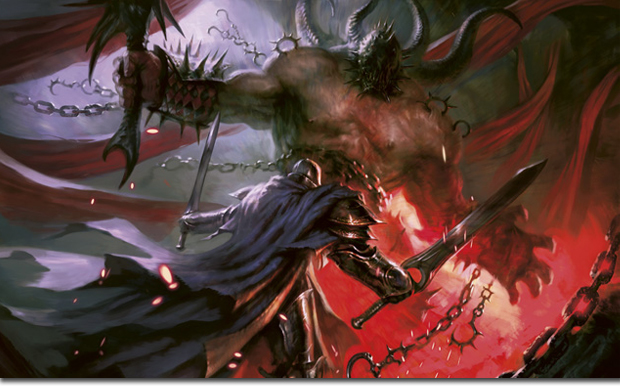
In each of these cases, the story structure, the formula, sets up a pattern that is recognizable. The details are unique (they are where the surprise comes from) but the essence of the story is something the audience internally understands (from a familiar structure comes comfort). The first and second act lead to the third act, which has to serve as closure for the story. Things that have been set up get paid off. Expectations have to get met. The story doesn't just end, it completes (unless you're watching a Phyrexian movie, at which point it compleats).
Magic has a different structure but the need to create and fulfill completion is just as important. Within a set, design creates patterns. The most common one is the cycle. You see a few cards that do something similar and you seek out the rest of the pattern. Other patterns that can be created are mechanics that will evolve as they go up in rarity. Players can see a common card with the mechanic and make predictions about where it will go as it gets more complex. The story can also form a pattern, as players hunt down the elements that make it up.
This pattern setting also extends beyond an expansion to the block. Each set can help set up the expansions that follow it. Sometimes, design will even make cards that directly hint at things to come. For example, in Dark Ascension, we put in the Helvault that would be the crux the entire Avacyn Restored Prerelease would be built on. In Mirrodin block, we had the Shield of Kaldra mention the Helm of Kaldra, which hadn't even come out yet. The Eye of Ugin in Worldwake teased the events of Rise of the Eldrazi and even had a mechanic that required Eldrazi—cards that hadn't showed up yet.
The trick to completion is that the real work comes earlier, as you have to take the care to set it up. The website had to make you want to return the next day. A story makes you want to stick around to see how it ends. Magic has to encourage you to want to keep exploring the set. If done correctly, this can be a very potent force.
- Being Schooled

All that was one of the things I brought to the table when I joined Ramp;D. I'll admit I wasn't sure when I walked in the door how much use my communications training would be, but the skills I learned in college couldn't have been more applicable to my job as a designer. In science, there are a lot of cases where a scientist comes from one field to another and has a breakthrough because he or she is able to look at old problems with new eyes. That's what I want for every new Ramp;D member. I want him or her to bring a new skill set to the table.
As always, I am eager to hear what you all think about today's column. It's interesting to bring some of my old world to my new one (well, after seventeen years, I'm not sure "new" is exactly correct). You can email me, leave a comment in the thread, or contact me through my social media (Twitter, Tumblr, and Google+).
Join me next week when I share some words.
Until then, may you bring your own unique set of skills to the table.
- Drive to Work #36—"Tales from the Pit"
My Magic-themed comic (which I post on social media) turned two, so I dedicated a podcast to talking about what it takes to make a comic every weekday.
Multi |
- Episode 36: Tales from the Pit (? MB)
- Episode 35: Blue (9.9 MB)
- Episode 34: Future Sight, Part 3 (10.2 MB)
- Episode 33: Future Sight, Part 2 (10.0 MB)
- Episode 32: Future Sight, Part 1 (10.5 MB)
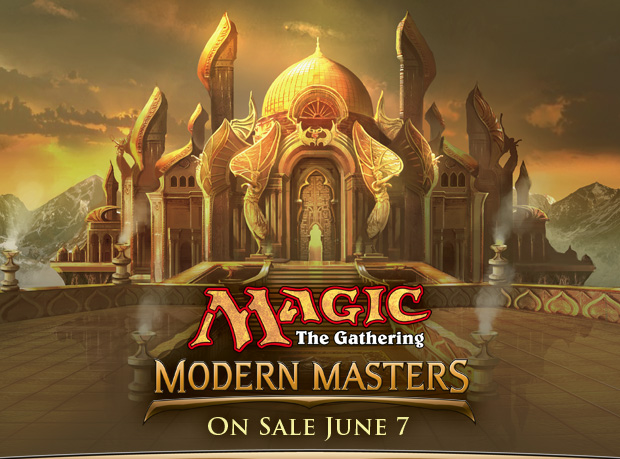





@maro254
Email Mark
Author Archive
Making Magic Archive
Working for Magic Ramp;D since October, 1995, Mark Rosewater is currently the head designer. His hobbies include spending time with his family, talking about Magic on every known medium (including a daily blog and a weekly podcast), and writing about himself in the third person.

